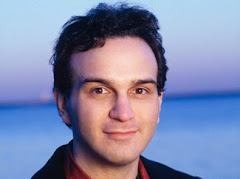No-one before or since has had more to say in a symphony than Mahler. He remains the most complex of all symphonists, and this daunting prospect in itself may account for the large number of empty seats in the DFP Hall in late May 2017. Despite the presence of a very brilliant Mahler conductor Yoel Gamzou, who previously directed a most moving Mahler Ninth Symphony in August 2016 at the DFP, the singular work of Mahler's Tenth Symphony in Gamzou's own realisation and elaboration of the late Austrian composer's unfinished drafts failed to attract a large KL audience.
Gamzou first came in contact with the Adagio from Gustav Mahler’s unfinished Tenth Symphony when he was about 12 or 13 years old, whilst fishing curiously amidst a jungle of books and scores in a local library. When he discovered that it was only the first movement of a large unfinished symphony, he instantly started investigating and was immediately confronted with the commonly accepted misinformation that the piece was a mere skeleton, a "preliminary sketch", and that it was of no use to get one’s hopes up about finding any "real symphony" out there.
One day, Gamzou suddenly felt as if the few bars in the middle of the Purgatorio (the third movement of the symphony) started telling him exactly how they wanted to be heard. His hand, almost unintentionally, took a pen and some music paper and started jotting down a few bars. Before he realised it, his Purgatorio was complete, fully orchestrated and annotated.
Frans Bouwman, a Dutch scholar who was first and foremost a musician, has dedicated his entire life to Mahler in a very selfless manner. Few people have ever amassed such an amount of knowledge about Mahler's Tenth as Bouwman has, and Gamzou believes nobody possesses such understanding of its meaning as he does.
Bouwman went on to help Gamzou for almost 10 years, providing material, allowing him glimpses into previously unpublished sketches, accompanying early performances and try outs, spending weeks and weeks correcting, proof reading and offering his knowledge, experience and above all his love for Mahler’s music with endless generosity. This is how the only "completed" version that has been prepared by a living conductor came into being. (The late Rudolf Barshai is the other conductor who has done a Mahler Symphony No 10 completion.)
In concert, the first movement (Adagio) opened with a meandering, barely tonal melody in the violas before they were joined by the whole orchestra, with a heartbreakingly beautiful melody in the violins. The movement inexorably led towards a dissonant climactic chord, which contained 9 of the 12 notes of a scale (known as the first announcement of the apocalypse), before quietly withdrawing; as if Mahler were reluctantly accepting his own impending death.
In the first Scherzo (Schnelle Viertel), Gamzou guided the MPO expertly through the frantic and exceedingly tricky changing metres of the scherzo as well as the sudden gearshifts of dynamics. The musical phrases took on a mocking tone, with the alternating Ländler-like sections being quite grotesque.
The third movement (Purgatorio) brought something resembling a sense of calm, but with violent outbursts potentially lurking behind every turn. The final outburst plunged straight into the fourth movement and second scherzo of the symphony (The Devil is dancing with me), a violent, tempestuous contrast to the seeming sense of peace of the former movement.
The very beginning of the fifth and final movement is very terrifying: twelve strokes of a muffled bass drum, played as loudly as possible; twelve universal, devastating strokes even more terminal than the hammer strokes of the Sixth Symphony, twelve strokes comprising the last hour of the universe, each one more shocking and rattling than the previous one.
Out of this, a soaring flute melody beautifully and hauntingly played by Hristo Dobrinov provided a glimmer of hope. The ensuing main section brings back the agitation of the Purgatorio, ending in a return of the nine-note dissonance. In its wake, an ethereal, hymn-like passage for the strings concluded the work, with Gamzou motionless for over a full minute before tumultuous applause erupted.
In a future season, it may be good to see Gamzou with the MPO again in Mahler's Das Lied von der Erde, prefaced by a short Mozart symphony, say like No 33 in B flat major K 319.
Subscribe to:
Post Comments (Atom)


















































No comments:
Post a Comment